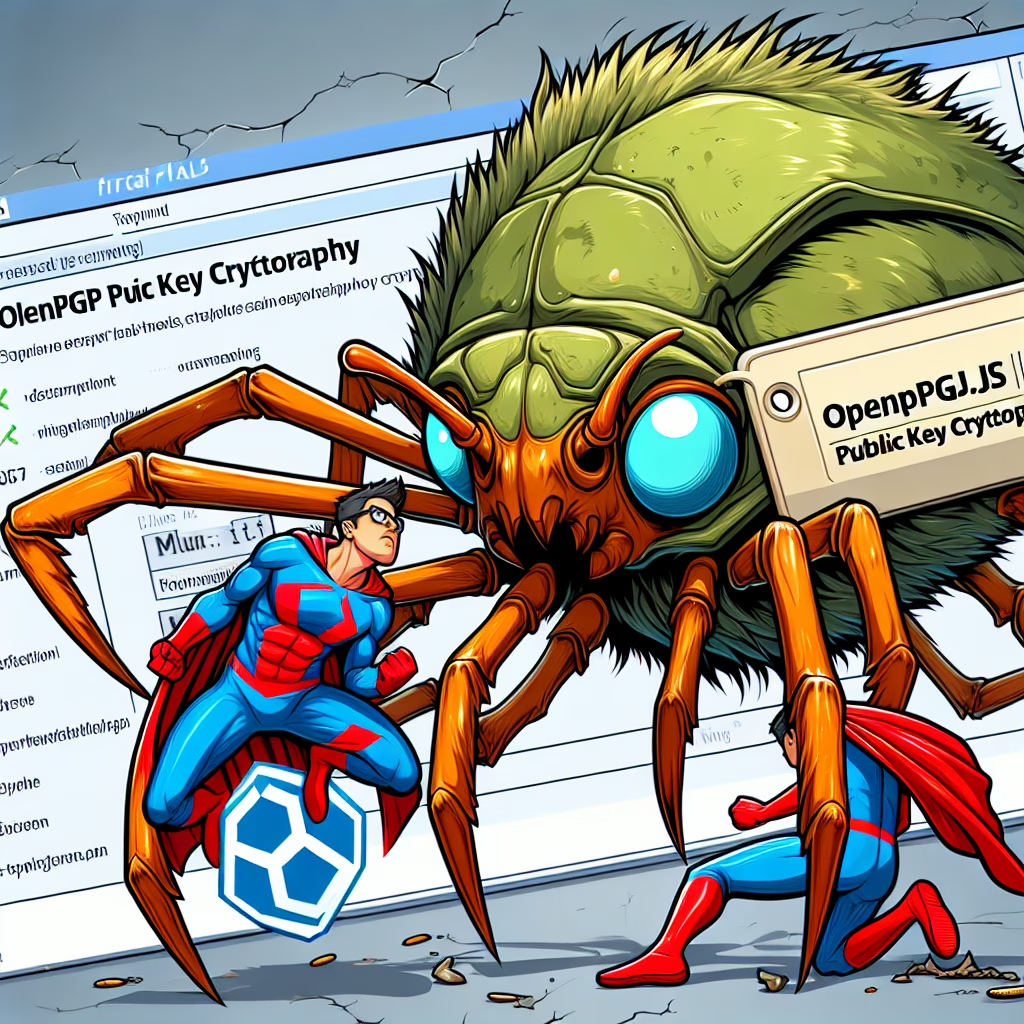In a world where public key cryptography reigns supreme, the recent OpenPGP.js flaw has thrown a delightful monkey wrench into the gears of digital security. If you thought you were safe sending encrypted messages, think again! This development is like discovering your favorite superhero has a kryptonite weakness—just when you thought they were invincible!
The Joys and Woes of Public Key Cryptography
Public key cryptography serves as the unsung hero of our online interactions, allowing us to send messages securely without fear of nosy neighbors (or hackers). It’s like having a mailbox that only you and your best friend can open. However, with great power comes great responsibility—and often, great vulnerabilities.
The recent discovery of the OpenPGP.js flaw has made waves in the cybersecurity community. The flaw essentially allows attackers to forge signatures and impersonate users. Imagine receiving an email from your boss, only to discover it was sent by a rogue intern pretending to be him. Yikes!
Understanding the Flaw in OpenPGP.js
So, what’s the scoop on this OpenPGP.js debacle? It turns out that a bug in the library used for implementing PGP encryption could allow malicious actors to generate valid signatures without actually having access to the private keys. This flaw puts countless users at risk, especially those relying on this library for securing their communications.
This isn’t just a minor glitch in the matrix; it’s more like discovering that your entire digital safe is unlocked. If you’ve been using OpenPGP.js for encryption, reconsider your strategy—perhaps it’s time to trade in your old bicycle for a shiny new electric scooter!
What Can You Do? Tips for Staying Secure in 2025
Before you toss your computer out the window in despair, let’s explore some practical steps you can take to ensure your digital life remains as secure as a vault in Fort Knox:
- Update Your Libraries: Keeping your software up-to-date is crucial. Developers are working hard to patch these vulnerabilities, so ensure you’re using the latest version of OpenPGP.js—or any encryption library for that matter.
- Use Alternative Libraries: While OpenPGP.js has its merits, consider exploring other libraries that provide similar functionalities without this pesky flaw. Alternatives like OpenPGP.js and JS Cryptor might suit your needs better.
- Educate Yourself: Knowledge is power! Familiarize yourself with cryptographic principles and stay informed about potential vulnerabilities. After all, knowledge is like a shield against cyber attacks!
- Enable Two-Factor Authentication: Adding an extra layer of security can help mitigate risks associated with compromised keys or accounts. Think of it as having a lock on your mailbox as well as a secret password.
The Future of Public Key Cryptography
The future may seem uncertain with this OpenPGP.js vulnerability lurking around, but fear not! The cybersecurity community is resilient and innovative. Researchers are constantly developing new methods to enhance security protocols. As advancements in public key cryptography occur, we can expect stronger methods that make such flaws obsolete.
As we move into 2025, anticipate improvements in public key infrastructure and cryptographic techniques. We may soon witness the implementation of more robust solutions which will effectively counter vulnerabilities—after all, who doesn’t love a good comeback story?
Your Thoughts Matter!
We’d love to hear what you think about this intriguing twist in the world of public key cryptography! Have you changed your security practices since hearing about the OpenPGP.js flaw? Share your thoughts below and join the conversation!
A special thank you to TechRadar for shedding light on this important topic and keeping us informed!

